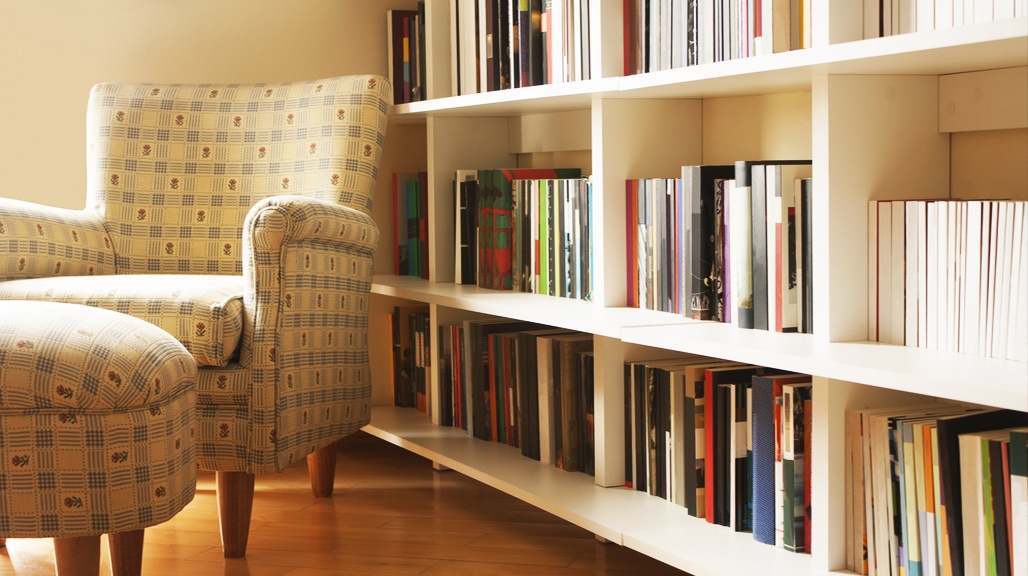The KonMari Method: Is It Really As Revolutionary As It Claims To Be?
 Contributed by
Nathalie Ricaud
December 8, 2016
Contributed by
Nathalie Ricaud
December 8, 2016

Marie Kondo’s book The Life-Changing Magic Of Tidying Up has been inspiring people all over the world to de-clutter.
Maybe you’ve heard about it and are wondering what the fuss is all about. Or maybe you want to get organised, and wonder whether you should read it before getting started. Well, I’ve read the book so let me summarise the 10 key principles of the KonMari method for you – and offer you my views on it as a professional organiser:
1. Before You Start, Visualise Your Destination
Agreed! As with any project, it’s critical to define your goals for your organising endeavour. Visualising the outcome is indeed very powerful. It’ll help you in decision-making during the de-cluttering process, and keep you motivated when the going gets tough. As Oprah’s organisational expert Peter Walsh wrote in his book It’s All Too Much, the key to getting – and staying – organized is to look beyond the stuff and imagine the life you could be living.
2. Discard First, Organise Second
Absolutely! More often than not, organising challenges are due to people having just too much stuff. It’s only once you’ve de-cluttered that you can decide on the optimum location and storage system for the amount of stuff you’ve decided to keep.
3. Discard All At Once, Intensely And Completely
Hmm, maybe. I do recognise the value of such a drastic approach. And it does work for some people, but for others, de-cluttering is a highly emotionally-charged time and there is only so much they can swallow at one go. What’s important to me is to be a catalyst in my clients’ lives and equip them with the tools, skills, motivation, and confidence to take their organising journey as far as they want it.
4. Sort By Category, Not By Location
Yes, where possible. That’s something I like to practise too because it forces you to gather all the items you own in one category and although it can be overwhelming, it’s really powerful to make you realise how much you own – and take action. However, this method may not always be practical, especially if you have a large home, a large volume of stuff not easily accessible, or if it is not possible for you to work on your project for long periods of time in one go. In these scenarios, I usually recommend a two-step approach: first a quick-and-dirty de-cluttering by room (removing the obvious items easy to part with), before attacking the most complex decisions by category.
5. Sort In The Correct Order – Clothes, Books, Documents, Miscellaneous and Sentimental items
Yes but to the correct order for YOU. We all have different relation to stuff. I had a client who was extremely attached to her books and couldn’t imagine getting rid of any of them, although she knew she had to. We had to tackle them towards the end, otherwise it would have been a much longer and tedious process. I recommend my clients to walk their way through their stuff from the easiest to the most difficult categories for them, instead of going through a standard sequence.
6. Keep Only Those Things That Inspire Joy
Oh, yes! That’s the one principle that’s in my perspective really ground-breaking in the KonMari method. More traditional approaches focus on letting go of stuff that we don’t love, need, or use, that’s no longer in good or working condition etc. But I find that focusing on the keeping instead of the letting go makes the whole de-cluttering process more positive. I’ve noticed that keeping things that spark joy re-energise people.
7. Thank The Items For Having Served Their Purpose
Hmm, maybe. This may appeal to people who form strong emotional attachments to their stuff as it may help them let go more easily. However most of my clients don’t relate to the idea.
8. Designate A Place For Everything
Definitely! In fact, it’s a common step in all methodologies that have been developed over the years by professional organisers. Take Julie Morgenstern’s SPACE methodology (Sort, Purge, Assign a home, Containerise, Equalise) for example.
9. Return Things Where They Belong After You Use Them
Definitely! There is no other way to maintain the results of your organising efforts.
10. Never Pile Things – Vertical Storage Is The Key
A definite yes. It makes things more visible, and retrieval easier. We’ve been practising this for quite some time with my son’s clothes and it’s been a win-win for both of us.
Should you put this book on your shopping list and read it? Yes, if you have never read any other organising book – I’ve personally enjoyed it. But most of the principles that have been attributed to Marie Kondo are actually not new. One of my favourite organising books is Julie Morgenstern’s Organizing From The Inside Out, as her approach takes into consideration each individual’s needs and preferences.
In any case, don’t wait to get organised: There’s no better time than now to get started!
Did you enjoy this post? Please comment, like and share!
—
We are the leaders, activists, innovators, and visionaries – whether in the public eye or behind the scenes – who are revolutionising the way people think and live. We are #ConnectedWomen.










Sorry, the comment form is closed at this time.